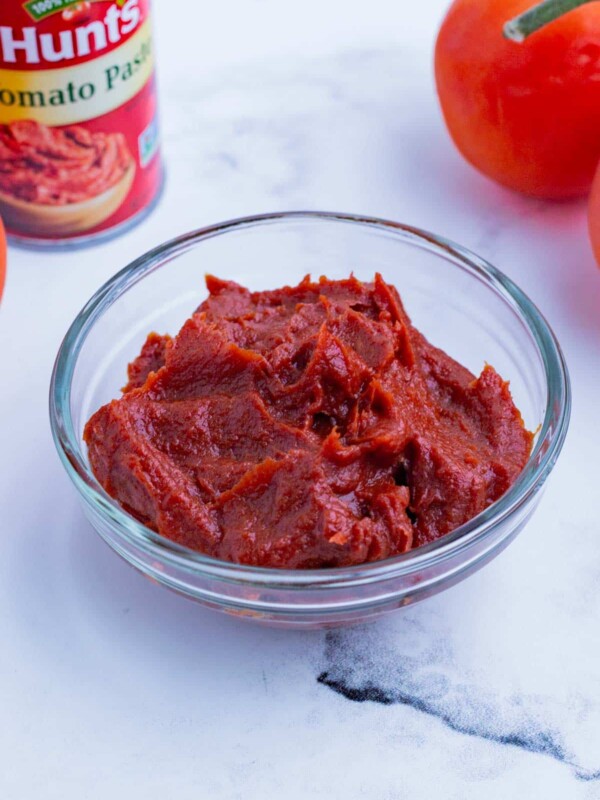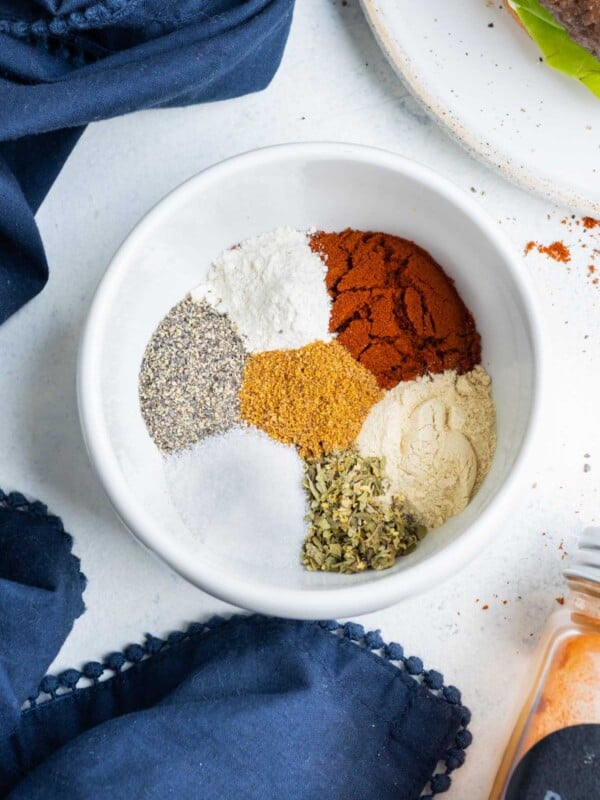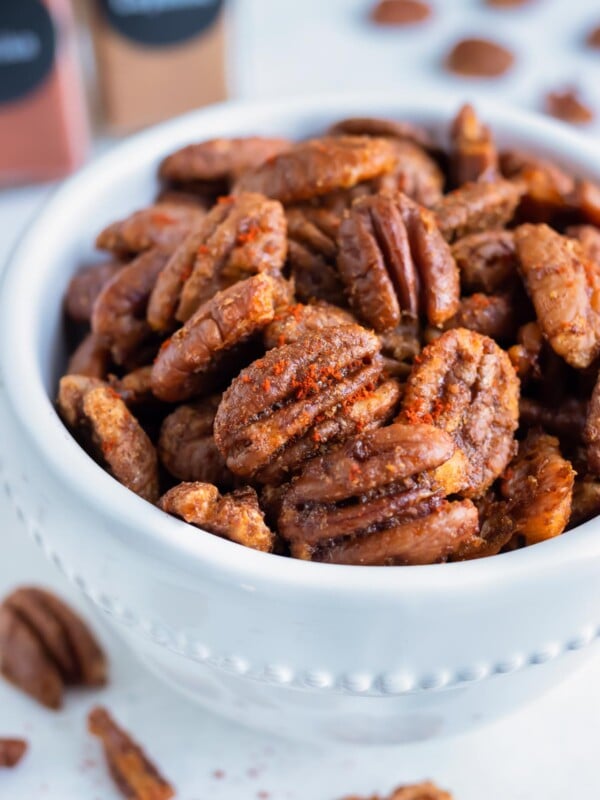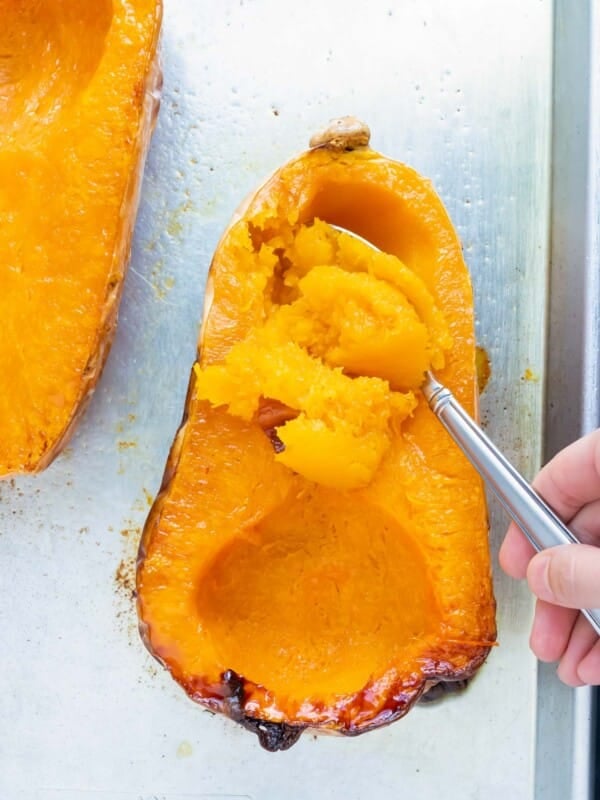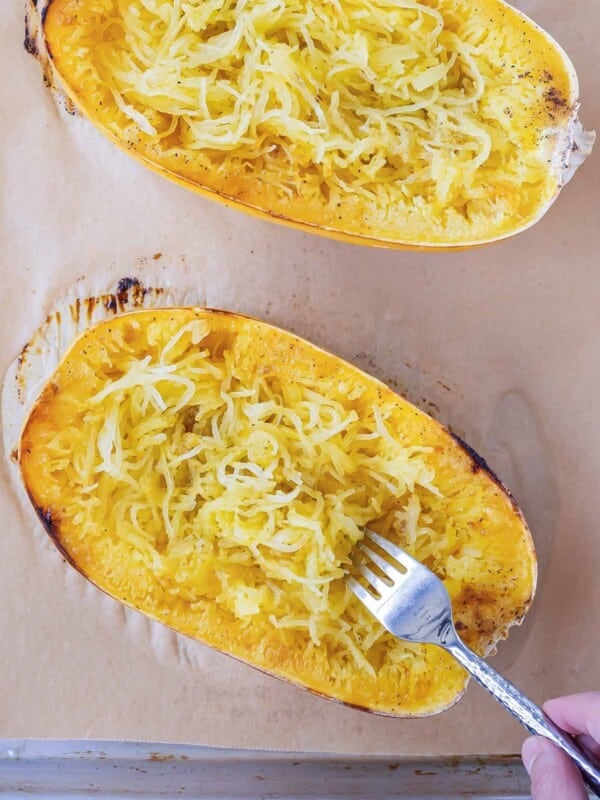What is tomato paste?
Tomato paste is concentrated tomatoes. The tomatoes have been cooked down with the seeds strained out, then cooked down again until becoming dense and paste-like.
So, why use tomato paste when you have fresh tomatoes?
Fresh tomatoes are 90-95% water. Without all that liquid, tomato paste can really showcase the tomato’s natural acidic, umami flavor and add depth and richness to any dish. (Wondering what is umami? This post has you covered.)
And since tomato paste is extremely concentrated, it only needs to be used in small amounts.
Table of Contents
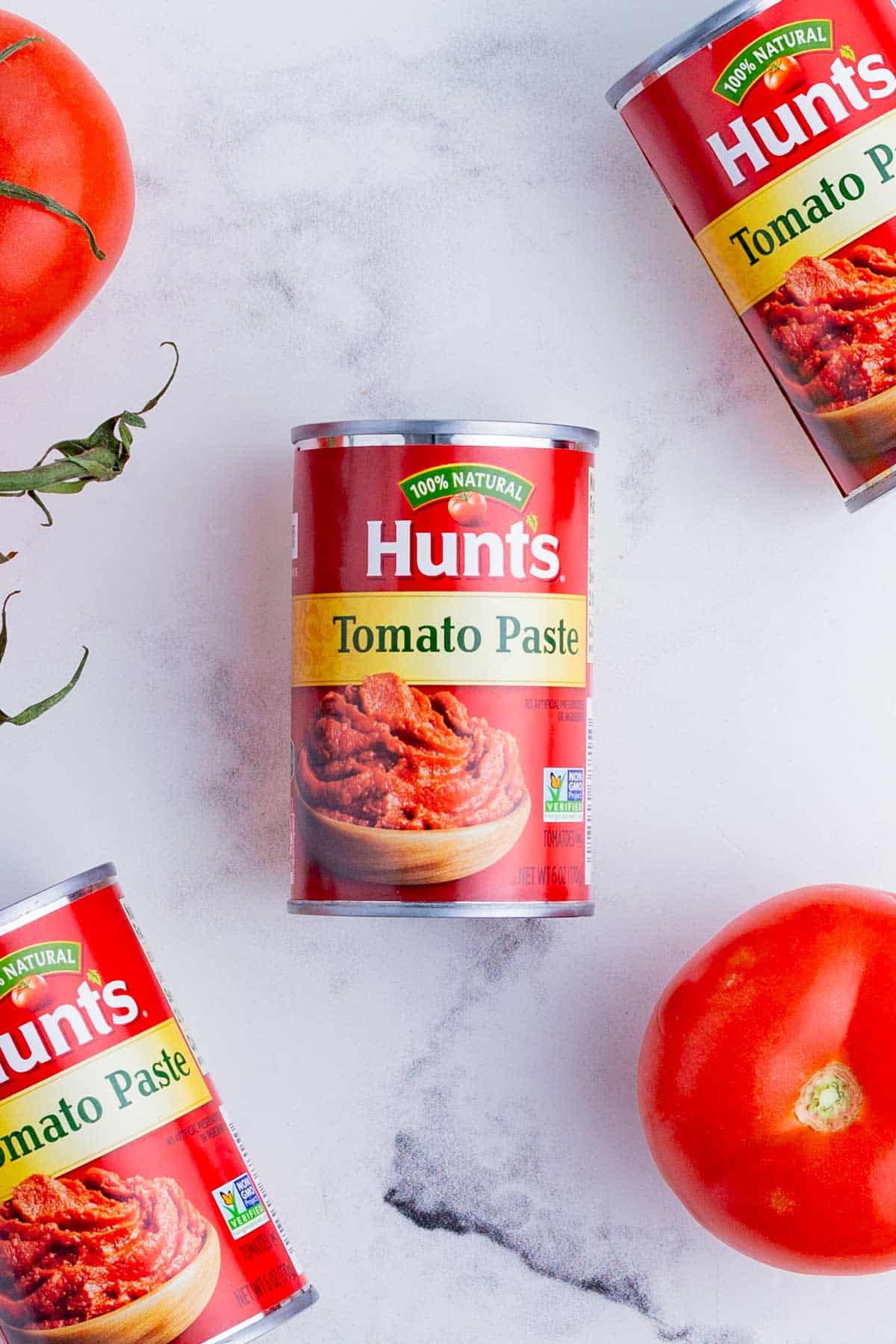
The Best Tomato Paste Substitutes
If you’re not one to buy tomato paste at your grocery store or have some on hand as a pantry staple, you’re in luck because there are 20+ tomato paste substitutes. You’re bound to have one of them in your kitchen!
You’ll learn the pros and cons of each, and how to ratio them so your dish comes out just as if you used tomato paste itself.
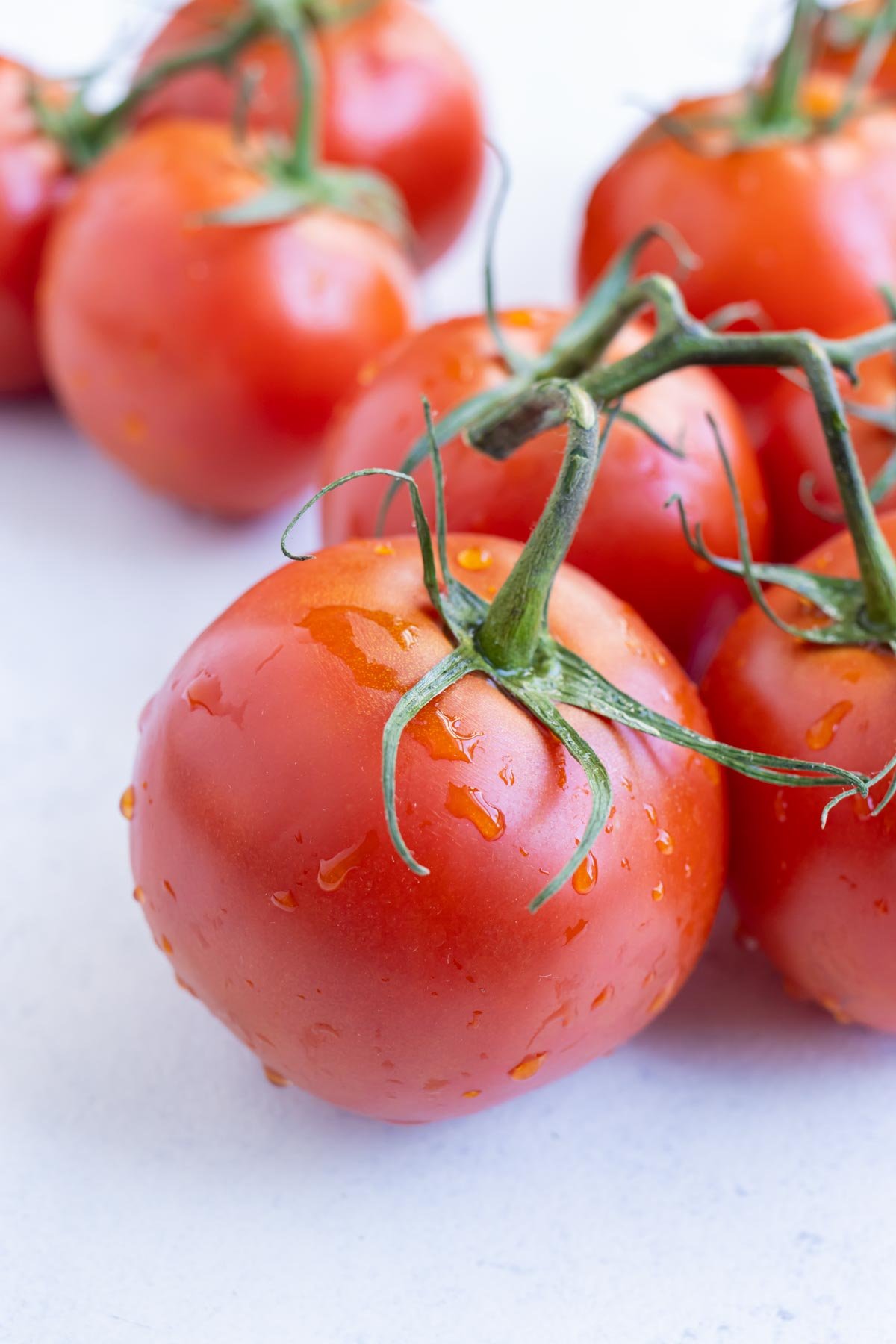
1. Fresh Tomatoes
Using fresh tomatoes is always a great idea, especially if you have your own home garden flourishing with them!
The best way to turn tomatoes into tomato paste is to cook them down until they are a thick, paste-like texture.
Then, add them to a food processor or blender. Once blended, strain out the seeds and peels. If you want to go the extra mile, cook them down again and, voila: you’ve just created your own homemade tomato paste!
Fresh tomatoes are best used in place of tomato paste in stews and soups. One medium fresh tomato will yield about one tablespoon of tomato paste.
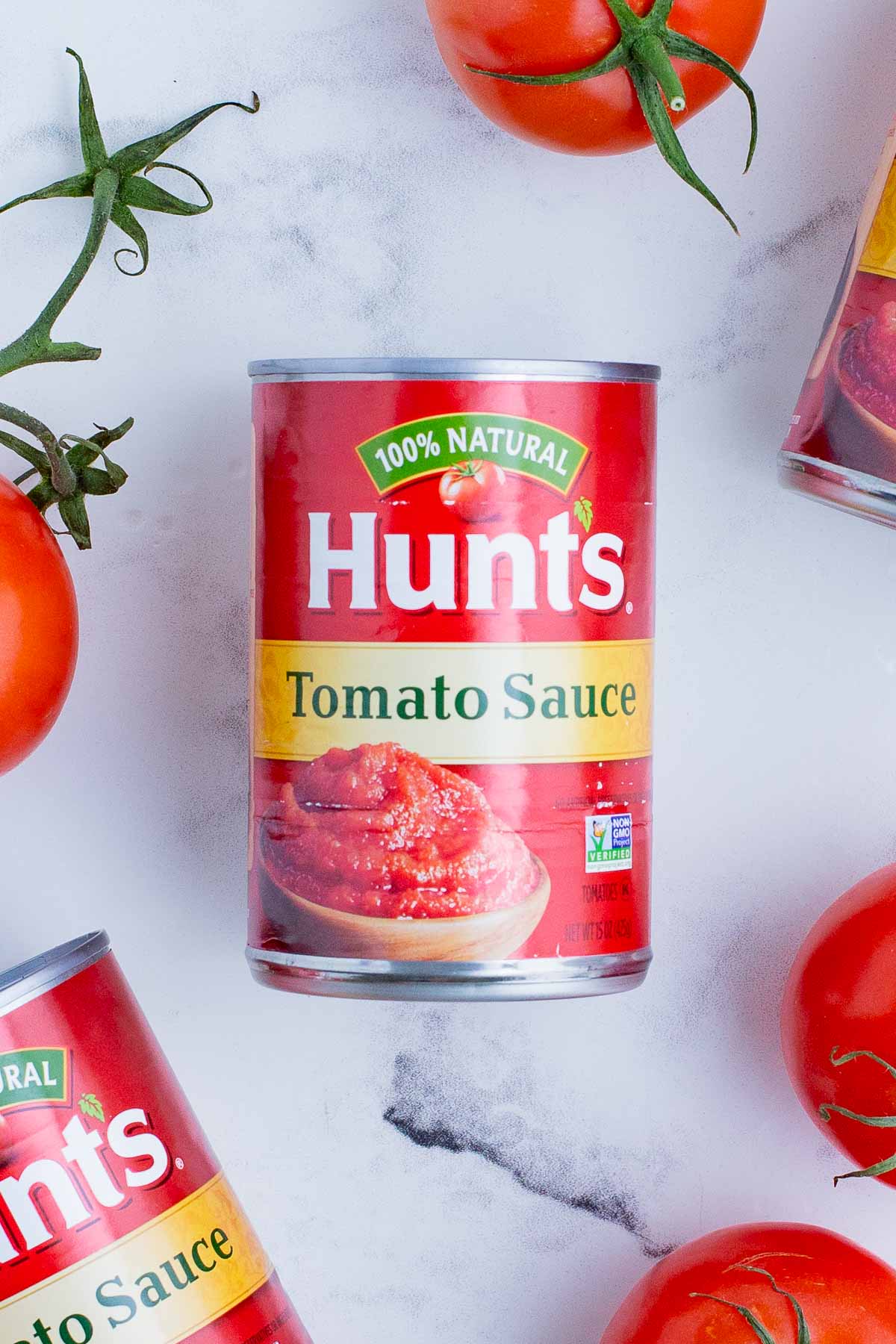
2. Tomato Sauce
Tomato sauce is considered one of the best substitutes because it’s easily accessible in any store. It’s also inexpensive and easy to stock up on year-round. Because it’s not as thick as tomato paste, you’ll have excess liquid so cook it down to bring out that umami flavor.
Tomato sauce can easily be used in pasta sauces, pizza sauce, soups, and stews. For every one tablespoon of tomato paste, add three tablespoons of cooked down tomato sauce.
*Something to note: Most tomato sauce brands already have added seasonings and spices like garlic powder, cumin, salt, and pepper (just to name a few). So when you do cook down the tomato sauce and are not happy with the taste, check your label and add the seasonings they list.*
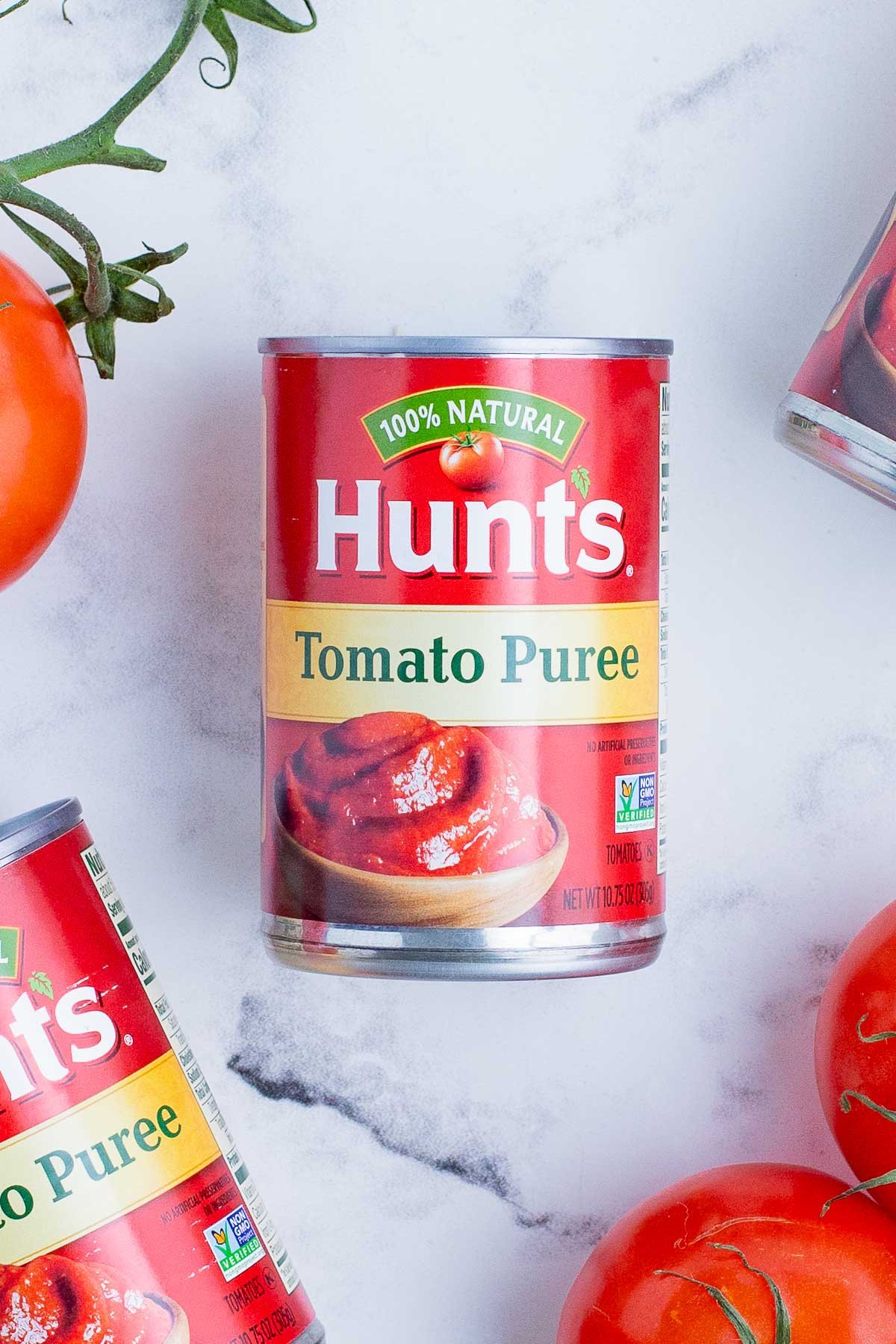
3. Tomato Purée
Tomato purée can be a great substitute for tomato paste, after you’ve cooked it down to thicken it up. It’s quicker to cook and thicker than tomato sauce.
Tomato purée is great in stews and soups. Use three tablespoons of cooked down tomato puree for every one tablespoon of tomato paste.
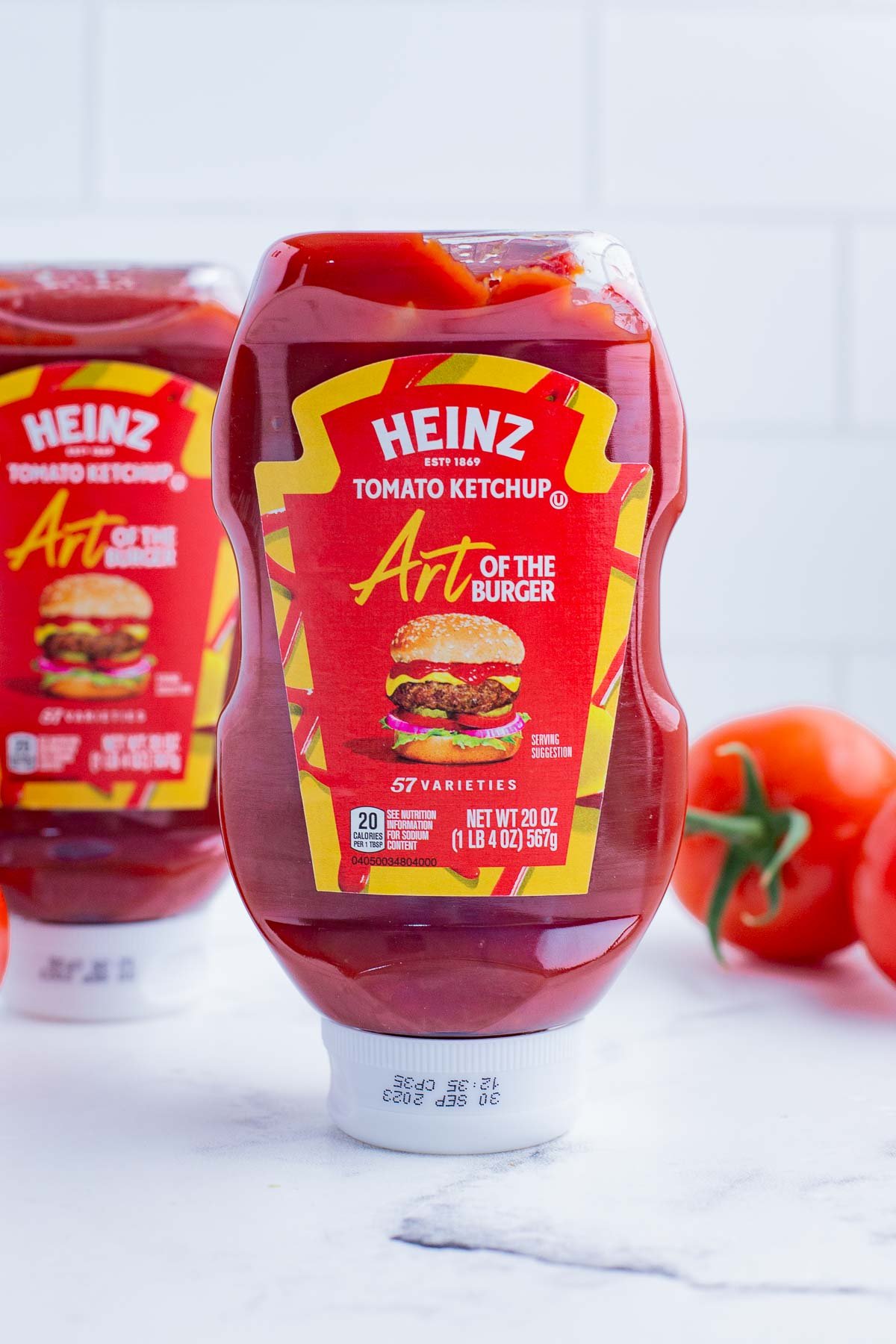
4. Tomato Ketchup
Tomato Ketchup is easily one of the most used tomato products because of its versatility in so many different cuisines. It’s sweeter than tomato paste, thicker than tomato sauce and purée, and easy to squeeze into your recipe.
Tomato ketchup can be used in soups, stews, pasta sauces, meatballs, and meatloaves. For one tablespoon of tomato paste, you’ll use one tablespoon of ketchup.
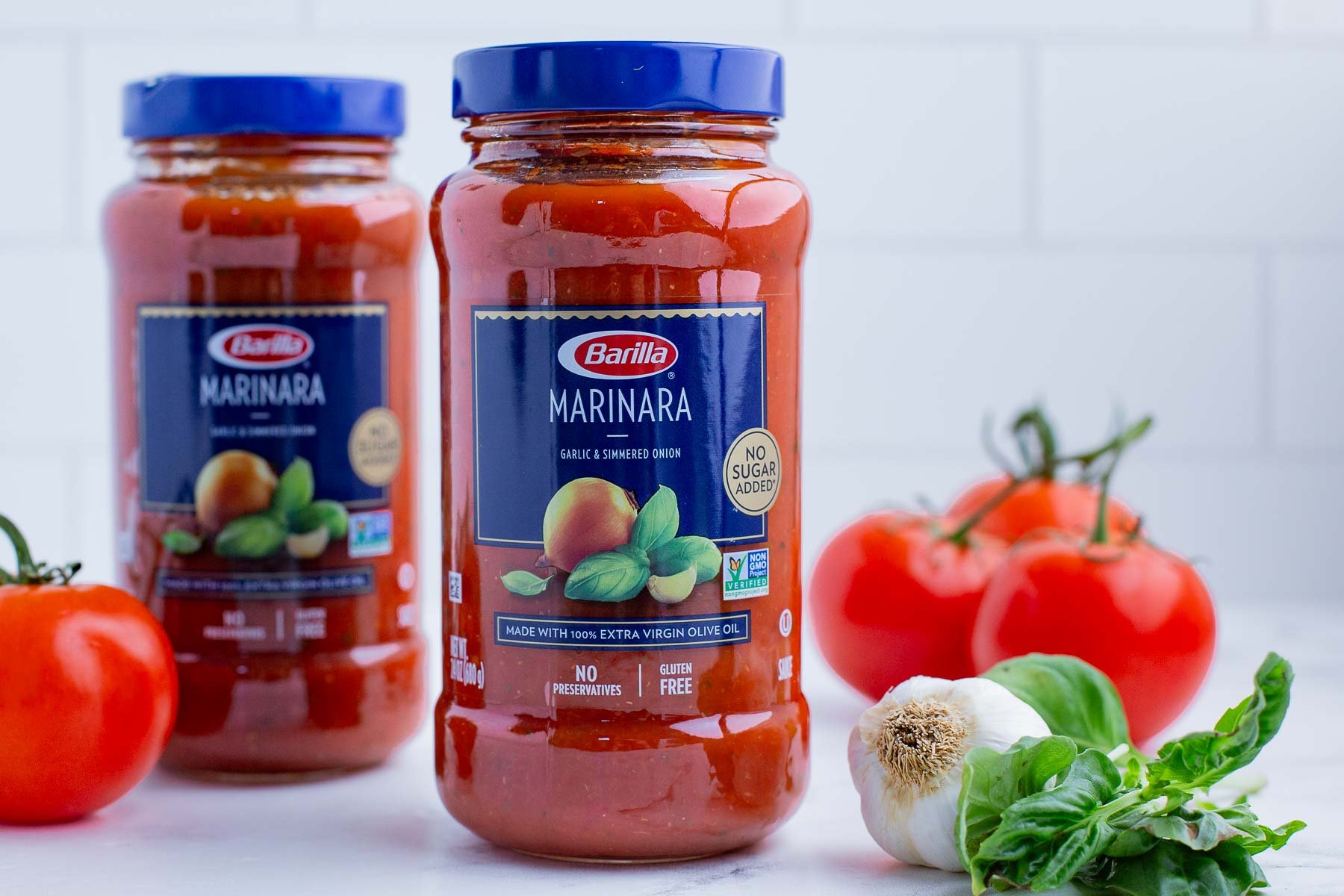
5. Marinara Sauce
Like tomato sauce, marinara sauce is seasoned up already, so it works great in place of tomato paste. Its flavor is closest to actual tomato paste and even tomato passata (the uncooked version of tomato paste). You’ll want to cook it down like you do with most of these substitutes to draw out the water and bring on the thickness.
Marinara sauce will literally work with any recipe that calls for tomato paste. If the recipe calls for one tablespoon of tomato paste, use two tablespoons of cooked down marinara sauce.
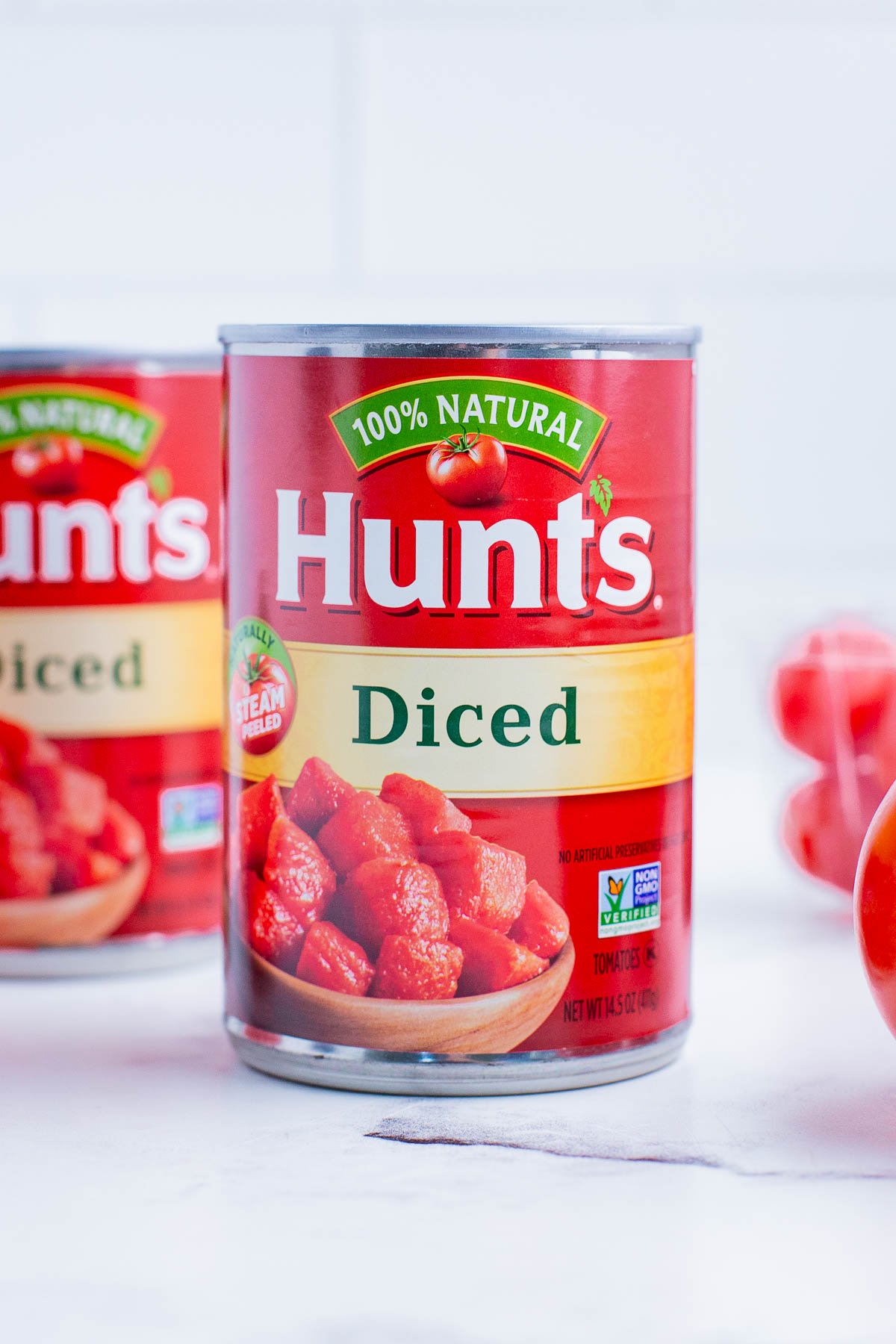
6. Canned Diced Tomatoes
The nice thing about canned diced tomatoes is that they don’t have seeds. They still are a bit watery, so you’ll want to blend them up and add them to a sauté pan to cook down. It’ll take about 10-13 minutes to get to the right consistency.
Canned diced tomatoes work well in any recipe that needs tomato paste. After cooking them down, use one tablespoon of canned diced tomatoes for every one tablespoon of tomato paste.
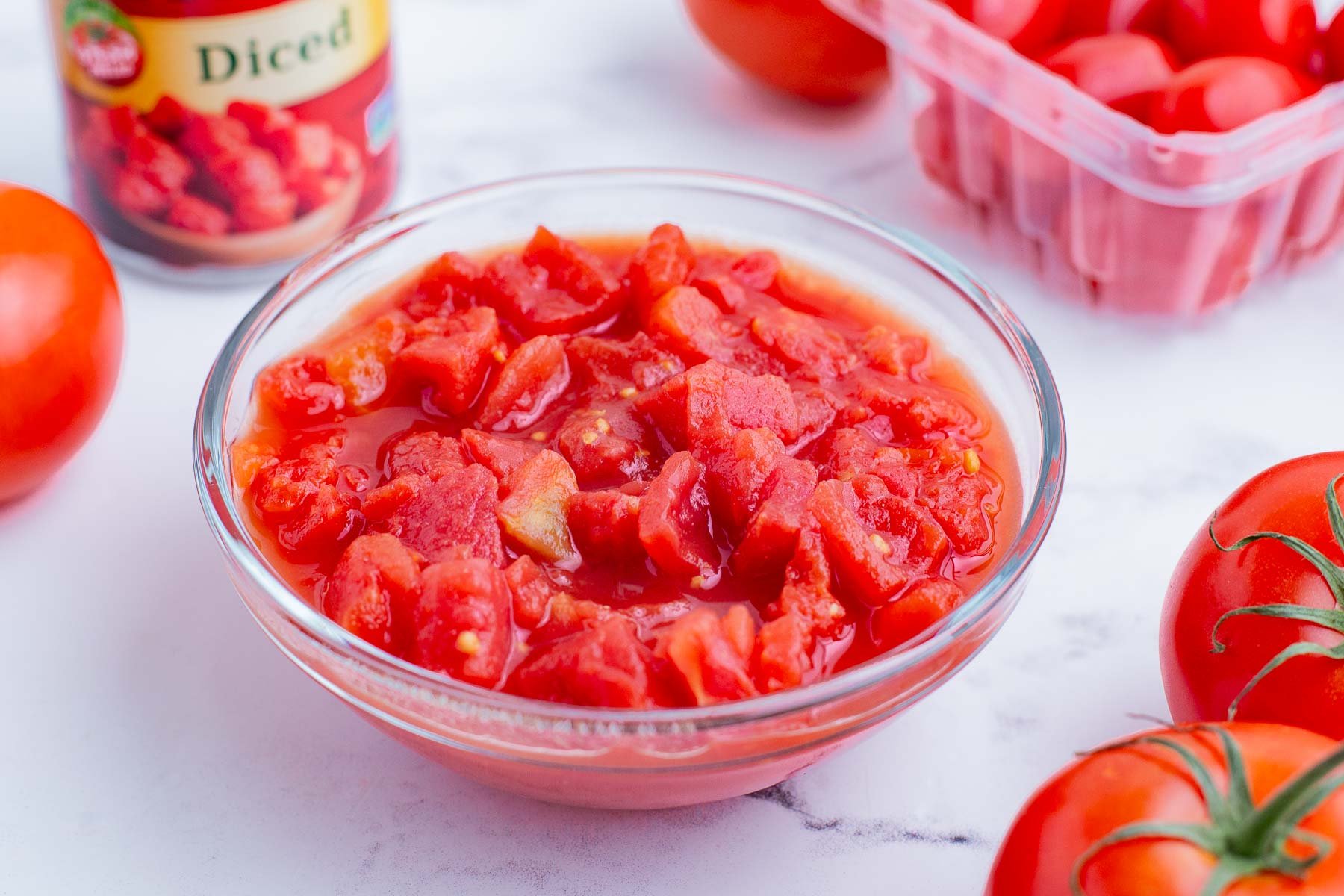
7. Crushed Tomatoes
Crushed tomatoes might seem very similar to canned diced tomatoes, but they are more of a thicker, pastier sauce. Some crushed tomatoes are chunkier or finer than others, so depending on the brand, you may or may not need to blend them up. Use your judgement on how you want your overall dish to look and taste.
Crushed tomatoes are great, once again, in any dish that calls for tomato paste. You’ll need to use two tablespoons of crushed tomatoes for every one tablespoon of tomato paste.
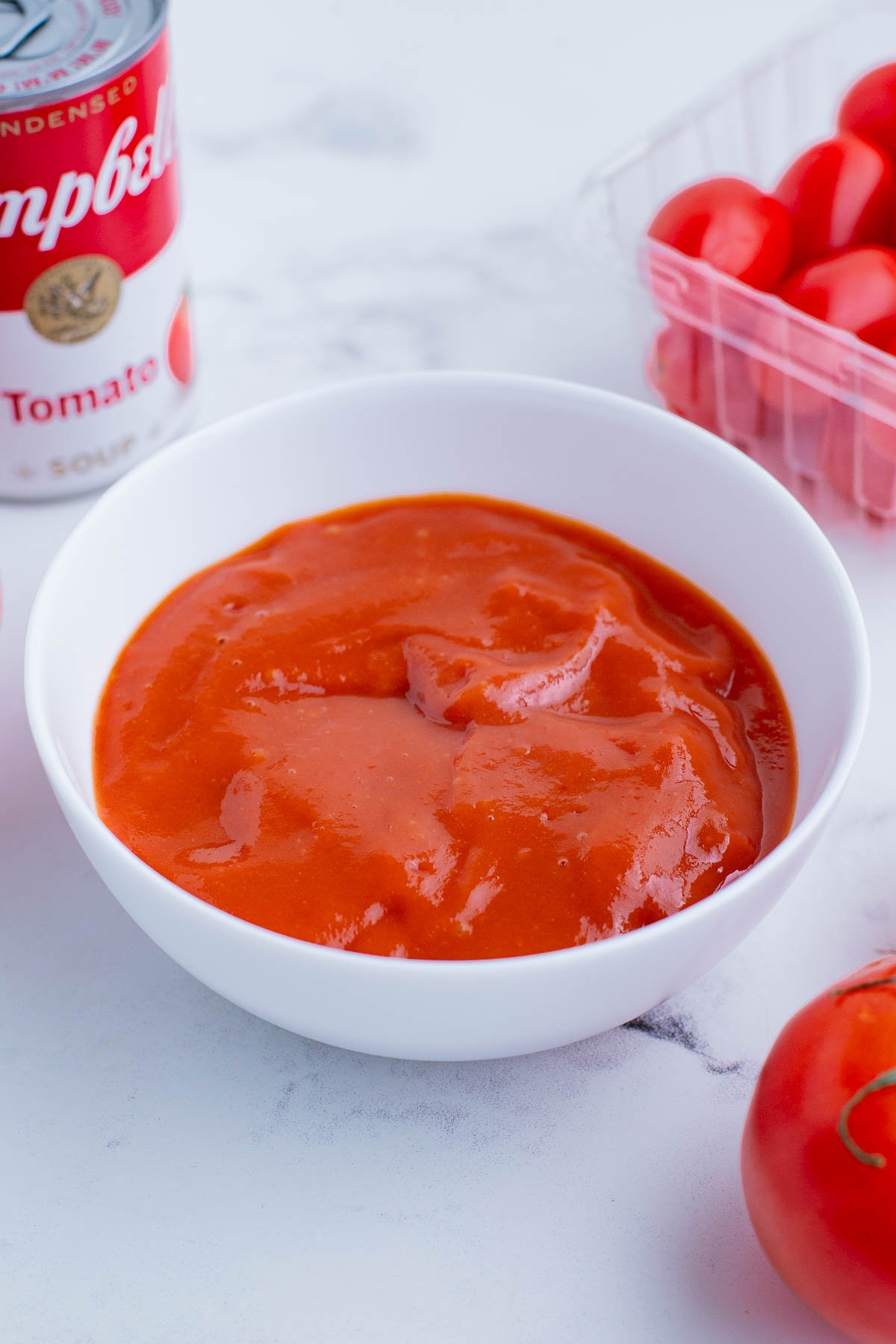
8. Tomato Soup
Unless you keep canned tomato soup on hand or eat tomato soup often and have leftovers, this is a great last-resort option. It can be sweeter, but the flavor and texture are what make this a good substitute. Like other substitutes, you should cook this down until it’s pasty.
Tomato soup can be used in soups, stews, and sauces for the best results. For every one tablespoon of tomato paste, use two tablespoons of tomato soup.
9. Puréed Roasted Red Peppers
Believe it or not, puréed roasted red bell peppers can be a great tomato paste alternative because of the flavor profile. They are smoky, sweet, and thick in consistency. Blend them up, and add them to your dish for a burst of flavor that’ll elevate it even more!
Puréed roasted red peppers can be used in recipes that have other peppery seasonings. For every one tablespoon of tomato paste, use one tablespoon of puréed roasted red peppers.
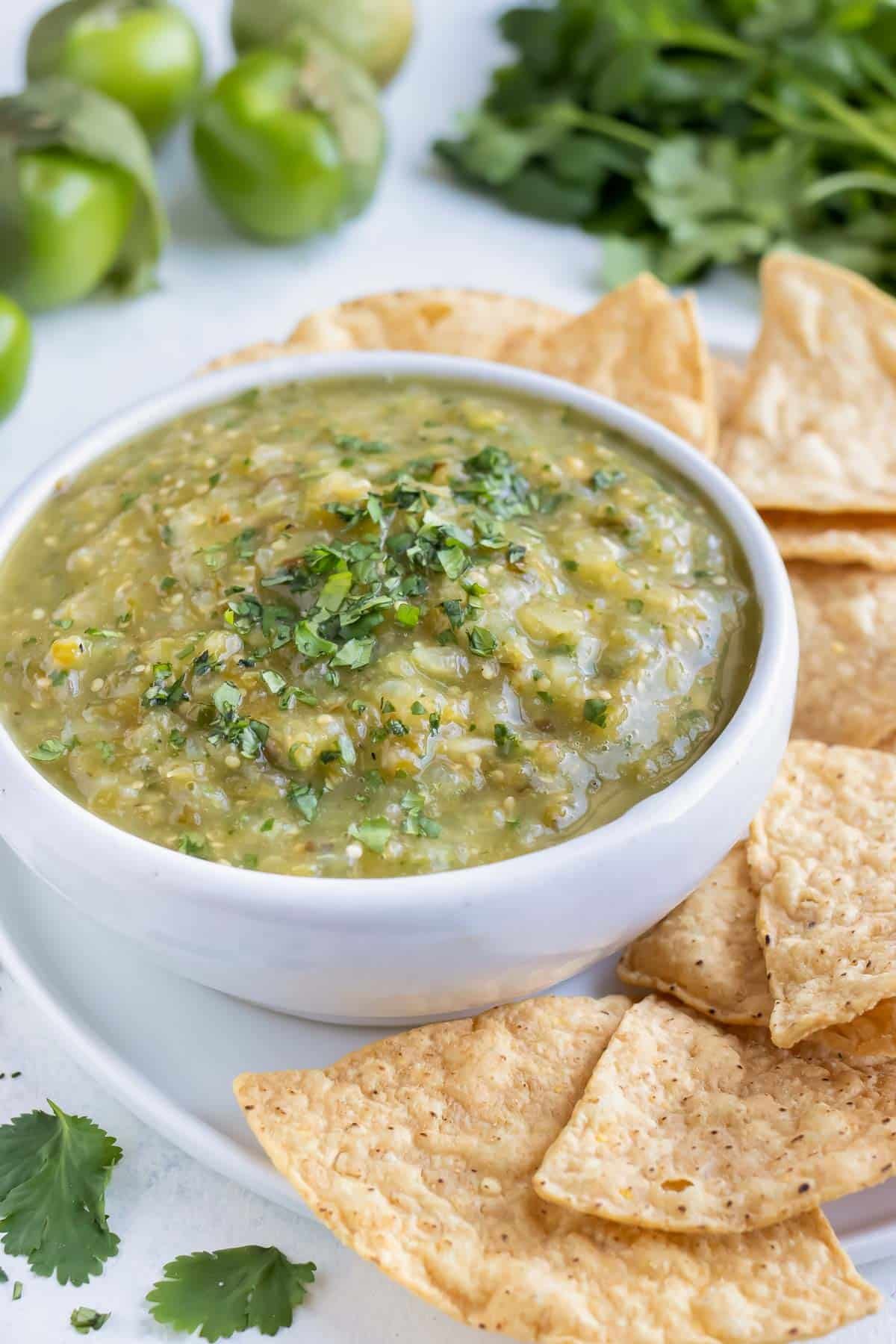
10. Green Salsa / Salsa Verde
If you don’t need the red from the tomato paste, then green salsa or salsa verde can be a good option! This substitute is made from tomatillos, a relative of green tomatoes. It may taste similar to tomato paste, but it does not match the paste-like consistency. Cooking it down to remove the water content is a great option, though you’ll still retain many of the salsa’s unique flavors, including any spice.
Use green salsa soups or stews. After cooking it down, use one tablespoon of green salsa when the recipe calls for one tablespoon of tomato paste.
11. Nomato Sauce
Nomato sauce is a great alternative to tomato paste because it adds a depth of flavor to your dish. It’s usually made of beets, carrots, or pumpkin (in fact, any puréed vegetable can be an excellent substitute). It’s thick once cooked down, and is really easy to use.
Nomato sauce works well in pasta sauces, pizza sauces, and soups. Once it’s cooked down, you’ll add three tablespoons of nomato sauce to every one tablespoon of tomato paste.
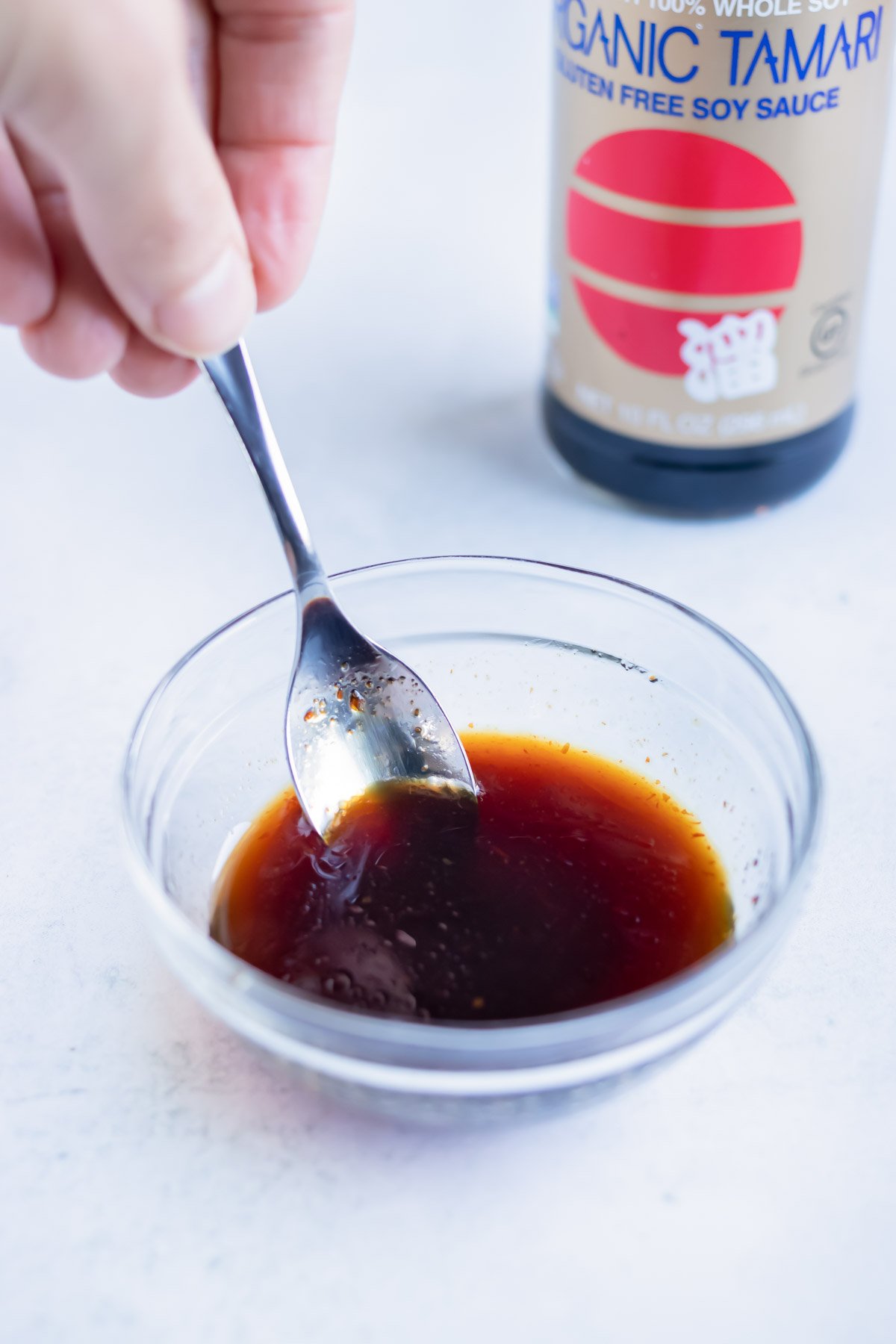
12. Soy Sauce
While soy sauce is very salty, it also has that umami flavor that tomatoes have; therefore, it’s a great alternative and you’re most likely to have it in your fridge. You’ll need to pair it with a thickener like cornstarch or flour, OR adjust other ingredients that your recipe calls for to keep the right consistency.
Soy sauce is ideal in soups and sauces that require a more savory flavor profile. For every one tablespoon of tomato paste, use one tablespoon of soy sauce.
13. Worcestershire Sauce
Worcestershire sauce has such a complex flavor that it adds layers of depth similar to tomato paste. The thinner consistency is the only issue, so like the soy sauce you’ll have to add a thickener.
Worcestershire sauce can be used in most recipes that call for tomato paste. Use one tablespoon of Worcestershire sauce when the recipe calls for one tablespoon of tomato paste.
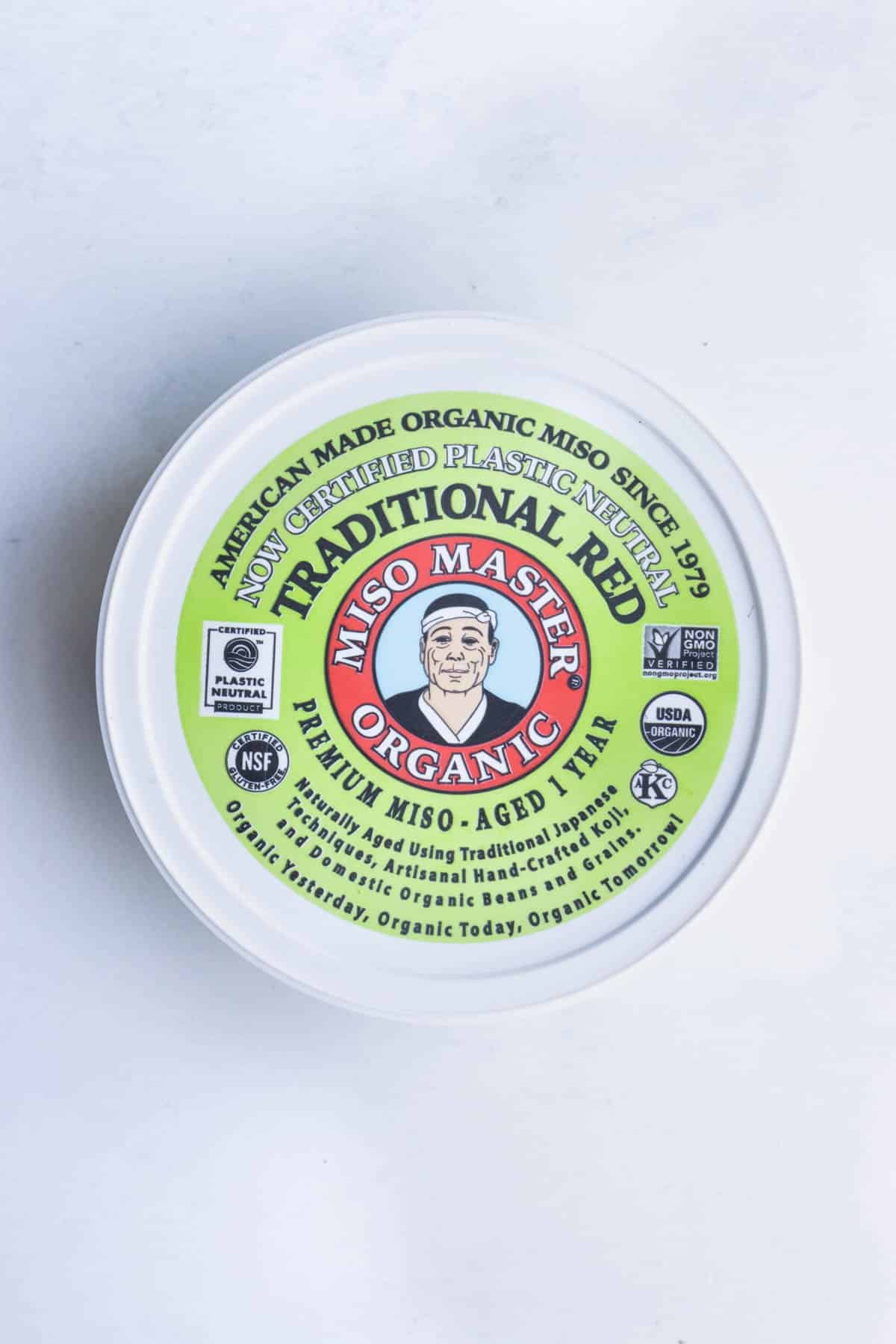
14. Miso Paste
Miso paste is an ideal substitute because it is thick, has that umami flavor, and requires no cooking down. The type you have—red or white, for example—can change the outcome of the dish. So go with a miso paste that you like and that aligns with the recipe!
Miso paste can be used in soups and sauces. Use one tablespoon of miso paste when the recipe calls for one tablespoon of tomato paste.
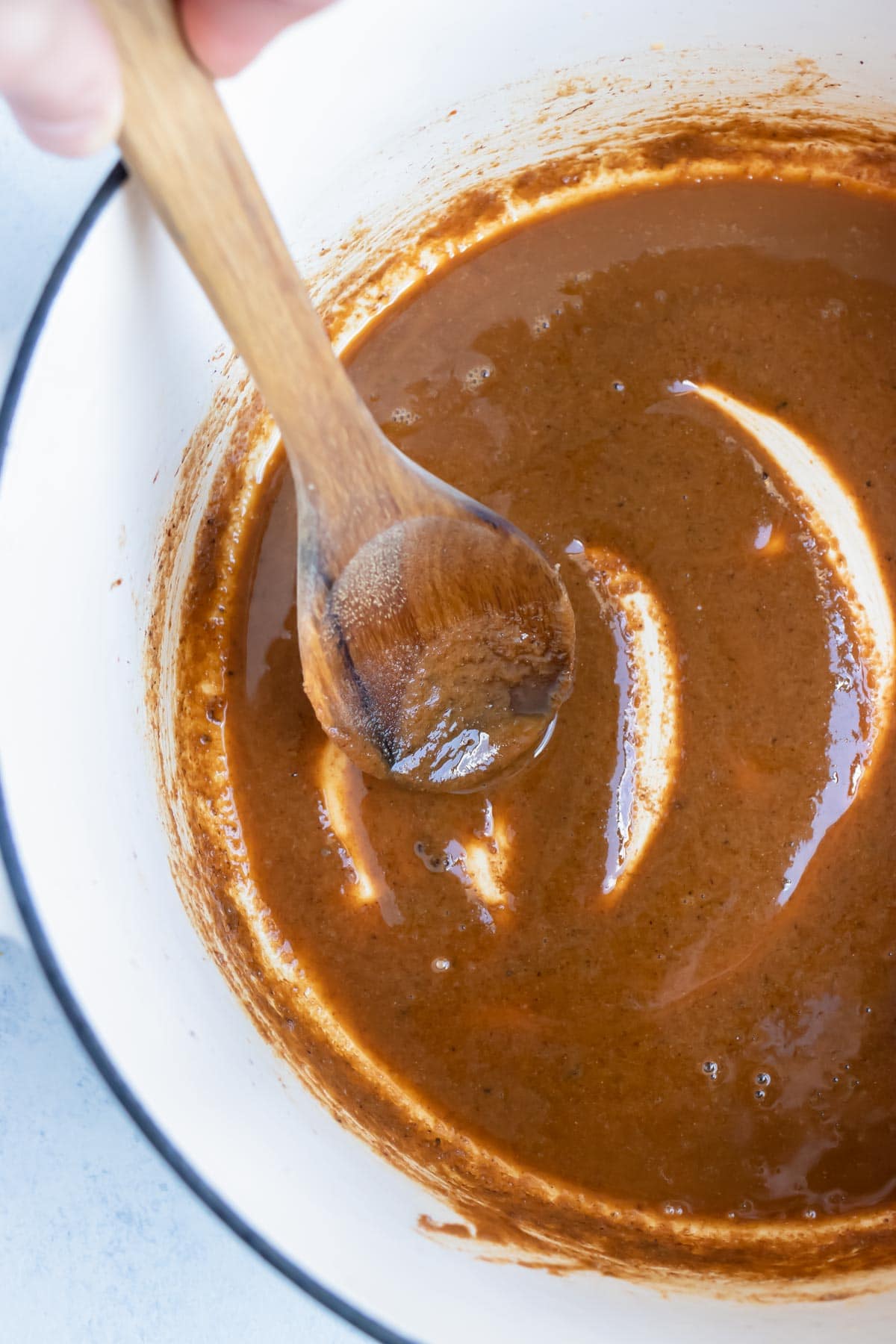
15. Roux
Roux has the same texture of tomato paste with its thick consistency and deep flavor. It’s made up of flour and fat (butter, olive oil) and is used specifically to thicken sauces, soups, and gravies. You can also add different spices to get the exact taste you want! Learn How to Make a Gumbo Roux if you don’t know how to already!
Roux’s work well in any recipe that needs a good thicken. Use half a tablespoon of roux when the recipe calls for one tablespoon.
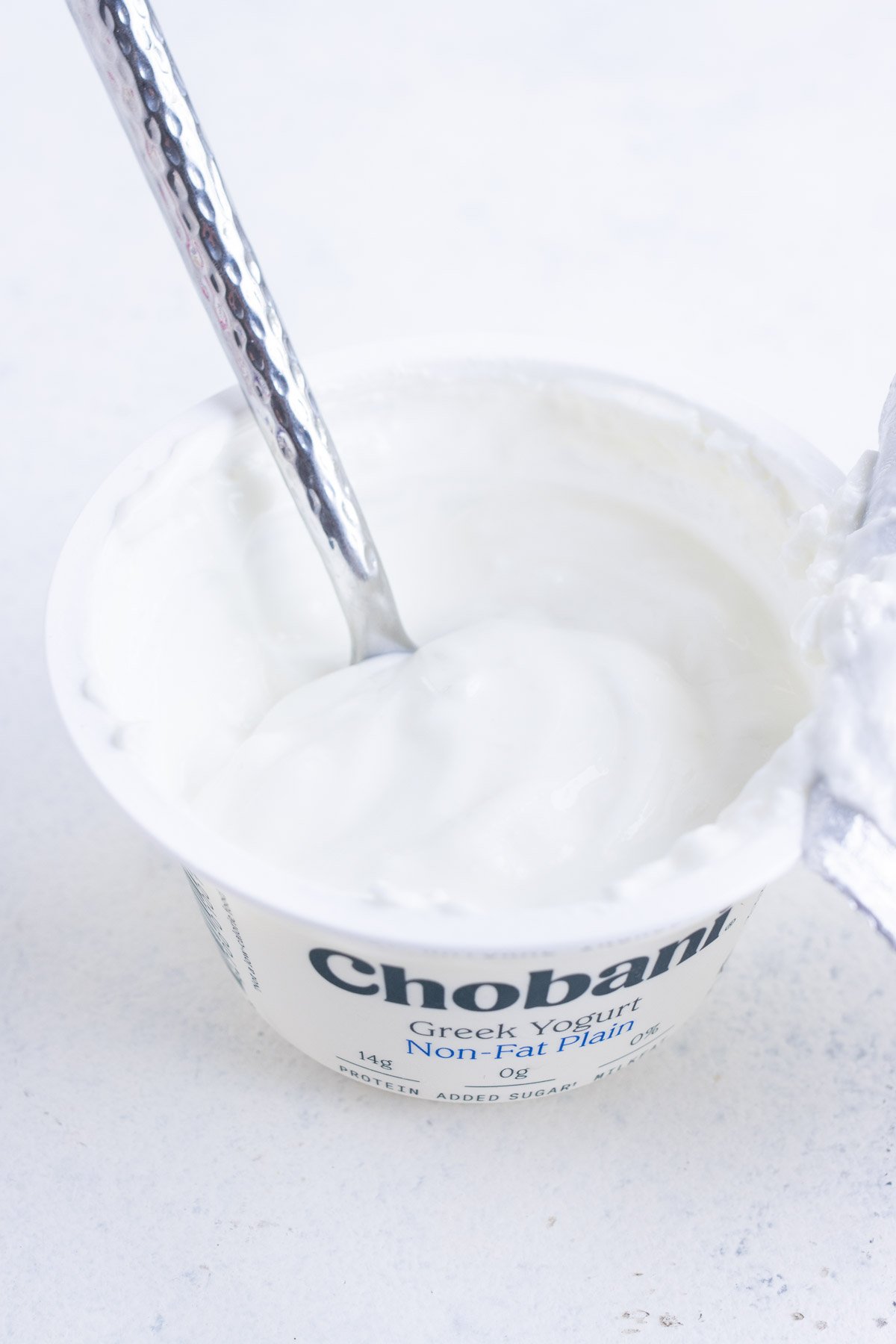
16. Greek Yogurt / Cream Cheese
Greek yogurt or cream cheese can be a great substitute for the acidity of tomato paste, though they are a good bit sour so make sure you have other spices to balance the flavors!
Greek yogurt or cream cheese can be used in sauces and soups. Use one tablespoon of Greek yogurt or cream cheese for one tablespoon of tomato paste.
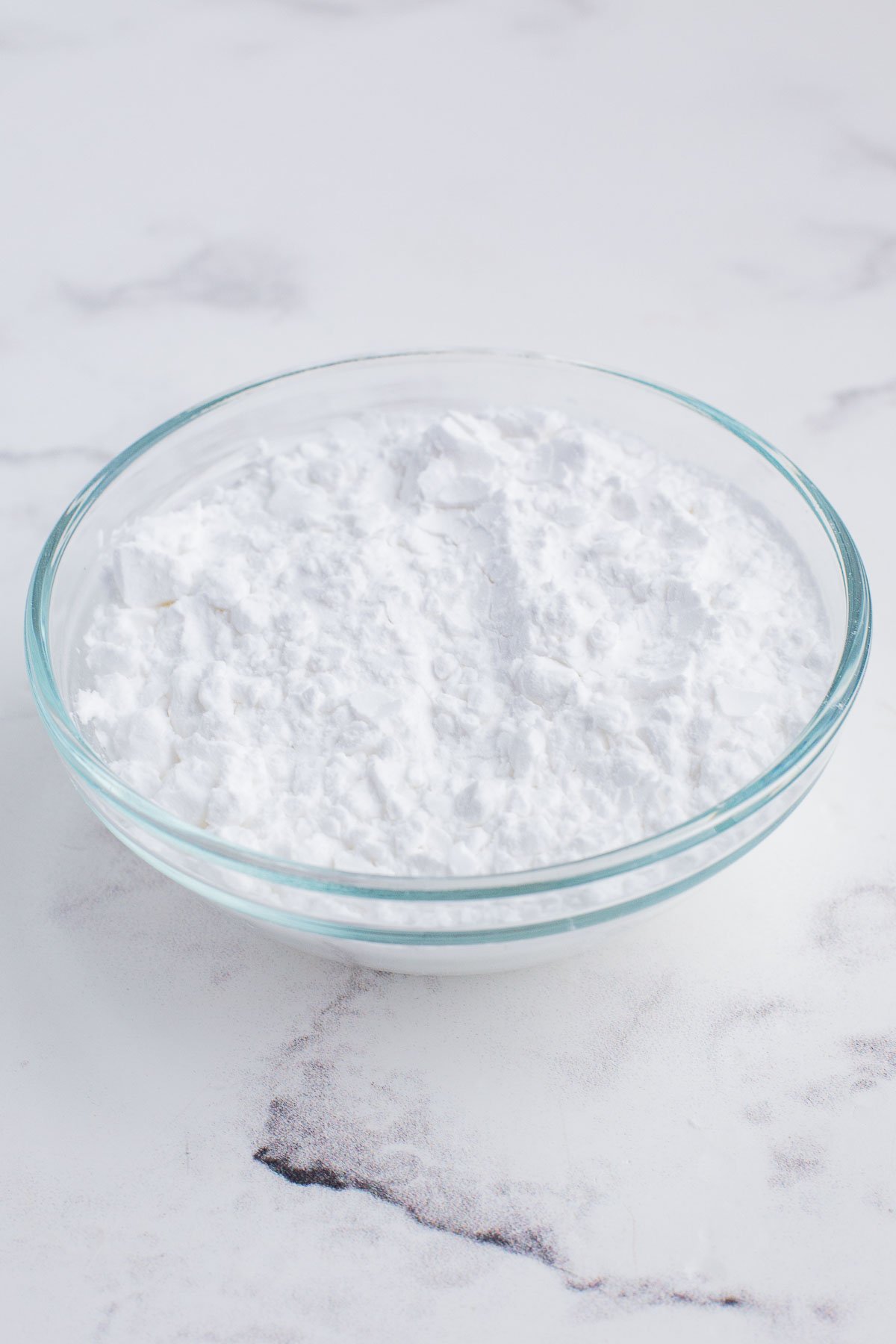
17. Cornstarch
If you need to lean on tomato paste’s thickening properties, cornstarch can take its place. You’ll want to pair it with other flavorings to add the umami and acidic flavor that tomato paste brings to the table. Cornstarch can easily be paired with any of the thinner-textured substitutes.
Cornstarch is great in sauces, soups, and stews. Use one tablespoon of cornstarch slurry for every two tablespoons of tomato paste. The slurry might not seem thick at first, but trust the process and let it do its thing!
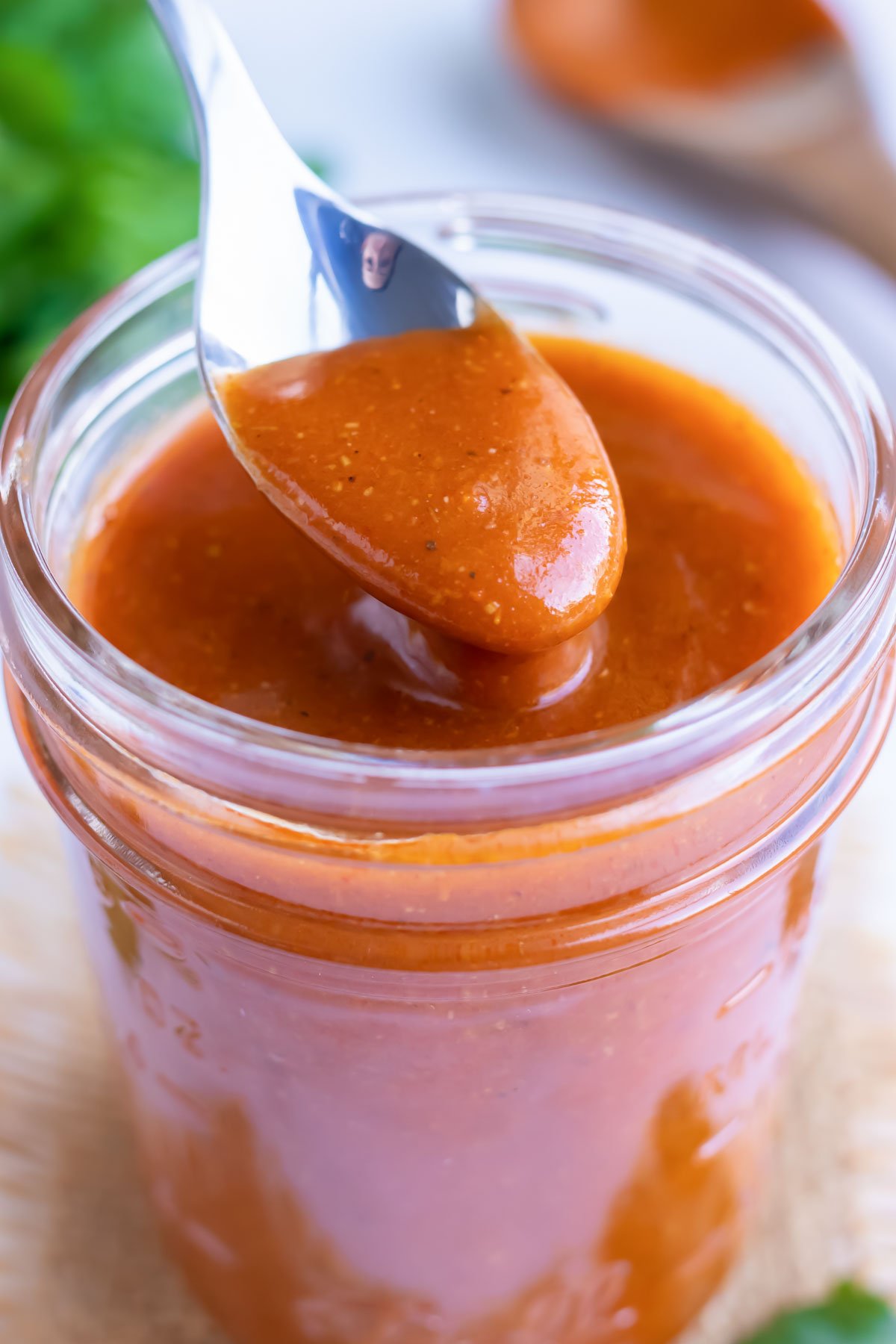
18. Enchilada Sauce
Like tomato purée, enchilada sauce can be a great substitute for tomato paste, after you’ve cooked it down to thicken it up. It’s quicker to cook and definitely has more flavor than tomato purée. Use our Red Enchilada Sauce recipe for this substitute!
Enchilada sauce is great in stews, soups, sauces, and pastas. Use three tablespoons of cooked down enchilada sauce for every one tablespoon of tomato paste.
19. Red Salsa
Similar to the green salsa or salsa verde substitute, red salsa is also a good option, and it’s the same color as tomato paste! It may taste similar to tomato paste, but it does not match the paste-like consistency. Cooking it down to remove the water content is an important step not to skip, though you’ll still retain many of the salsa’s unique flavors, including any spice.
Use red salsa soups or stews. After cooking it down, use one tablespoon of red salsa when the recipe calls for one tablespoon of tomato paste.
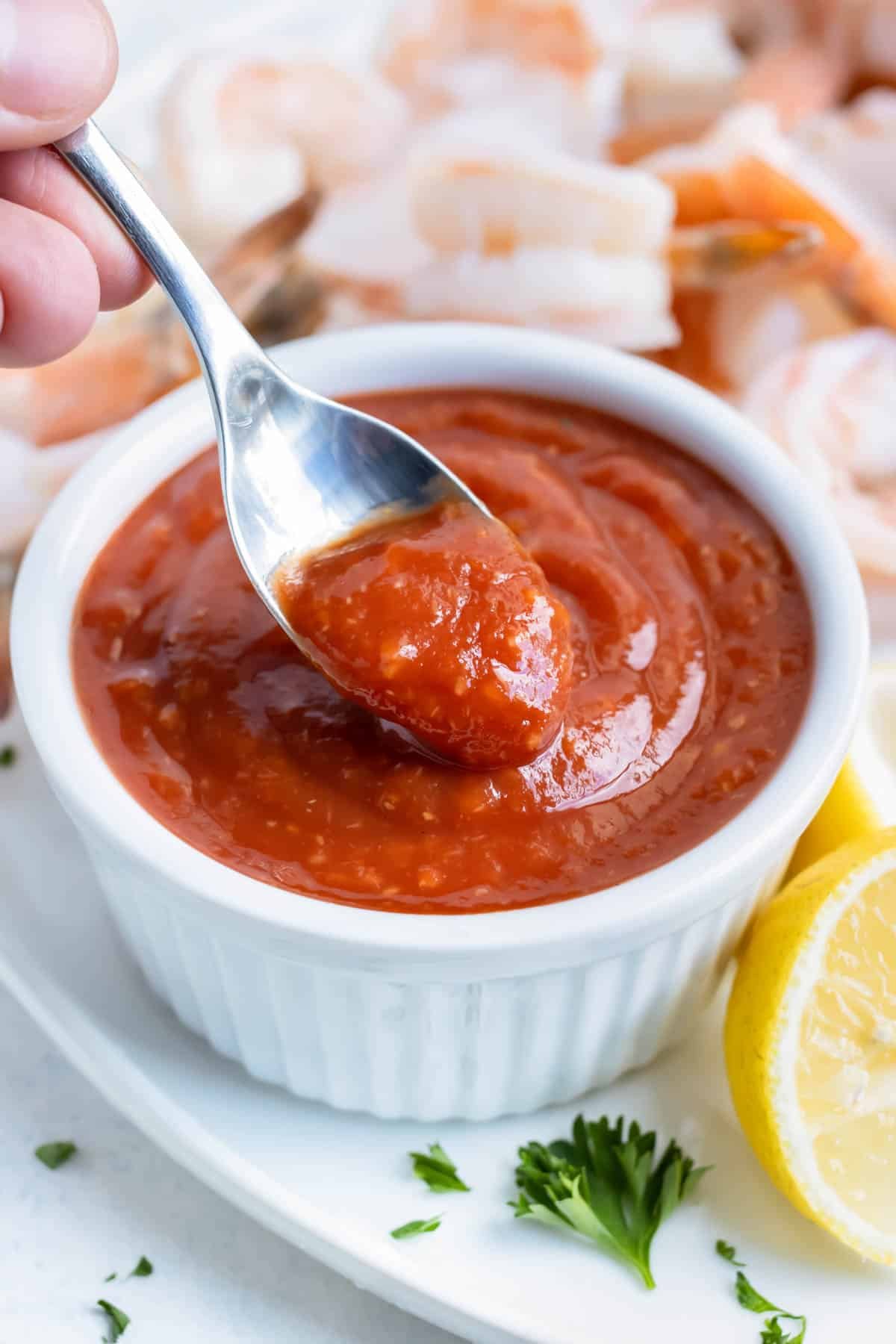
20. Cocktail Sauce
Cocktail sauce has a unique taste, yet it works great in place of tomato paste because of consistency and color. You’ll want to cook it down just a tad like you do with most of these substitutes to draw out the water and bring on more thickness. Try out our Cocktail Sauce recipe for this substitute!
Cocktail sauce will literally work with any recipe that calls for tomato paste. If the recipe calls for one tablespoon of tomato paste, use two tablespoons of cooked down marinara sauce.
21. Pizza Sauce
Pizza sauce is a classic tomato paste substitute, and it’s very similar to tomato sauce, marinara sauce, and even cocktail sauce. With this last substitute we’re recommending, cook it down to thicken it up!
Pizza sauce can work in any recipe that calls for tomato paste, so take advantage of it! If the recipe calls for one tablespoon of tomato paste, use two tablespoons of cooked down pizza sauce.
FAQs
Tomato paste adds a concentrated acidic sweetness and a burst of meaty and savory flavor (also known as umami). It also amplifies the impact of tomatoes you may be using in sauces, soups, and marinaras. Sometimes, it’s used to thicken a sauce too.
When you don’t use the whole canned tomato paste, you can store it by scooping it in ice cube trays and freezing it. Once they are frozen solid, you can store them in plastic bags in the freezer for up to 3 months.
Even the smallest can of tomato paste might not be used all at once, so some people choose to buy tubed tomato paste which works just as well. But, are they the same? Yes and no.
Canned tomato paste is preserved in citric acid while tubed tomato paste is preserved in salt. As a result, the canned tomato paste will bring a more deeply savory and acidic flavor to your dish, while the tubed tomato paste brings out a fresher, stronger tomato taste. Either product will impart those ideal savory notes.
Tomatoes, including tomato paste, are healthy. Tomatoes in general have many great health benefits and can be easily used in different forms across cuisines. The more processed a tomato is, like in tomato paste, the higher possibility it has more lycopene. Lycopene is an antioxidant that protects against forms of cancer and promotes skin health.
It’s not necessarily bad to eat raw tomato paste, but it’s not usually advised. It’s incredibly sour with a rough and raw aftertaste.
Tomatoes can be inflammatory if not eaten in moderation. But in reality, they do not cause enough inflammation to form a big concern.
Tomato paste does make a big difference in cooking, and can turn a bland dish into a flavorful, savory one. Tomato paste is basically caramelized, cooked down tomatoes. This makes them rich in umami flavor and adds extreme depth to your dishes.

Recipes Including Tomato Paste
The depth of flavor in each of these recipes is thanks to tomato paste, but they are easily adaptable with any substitute.

